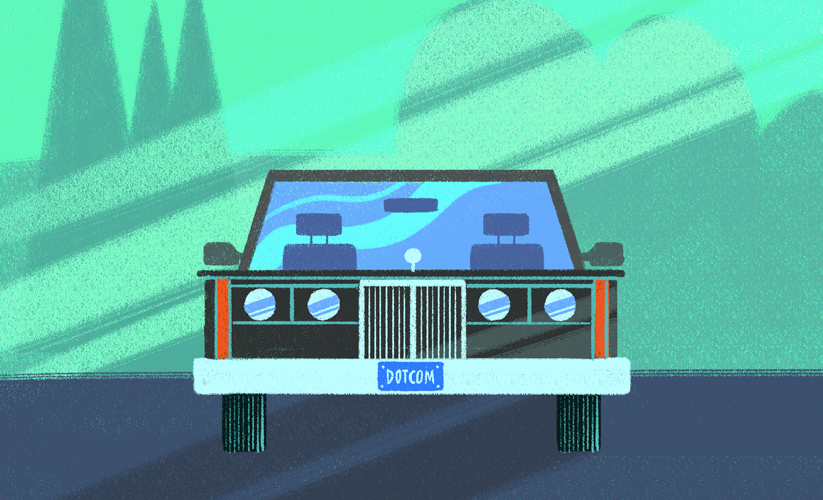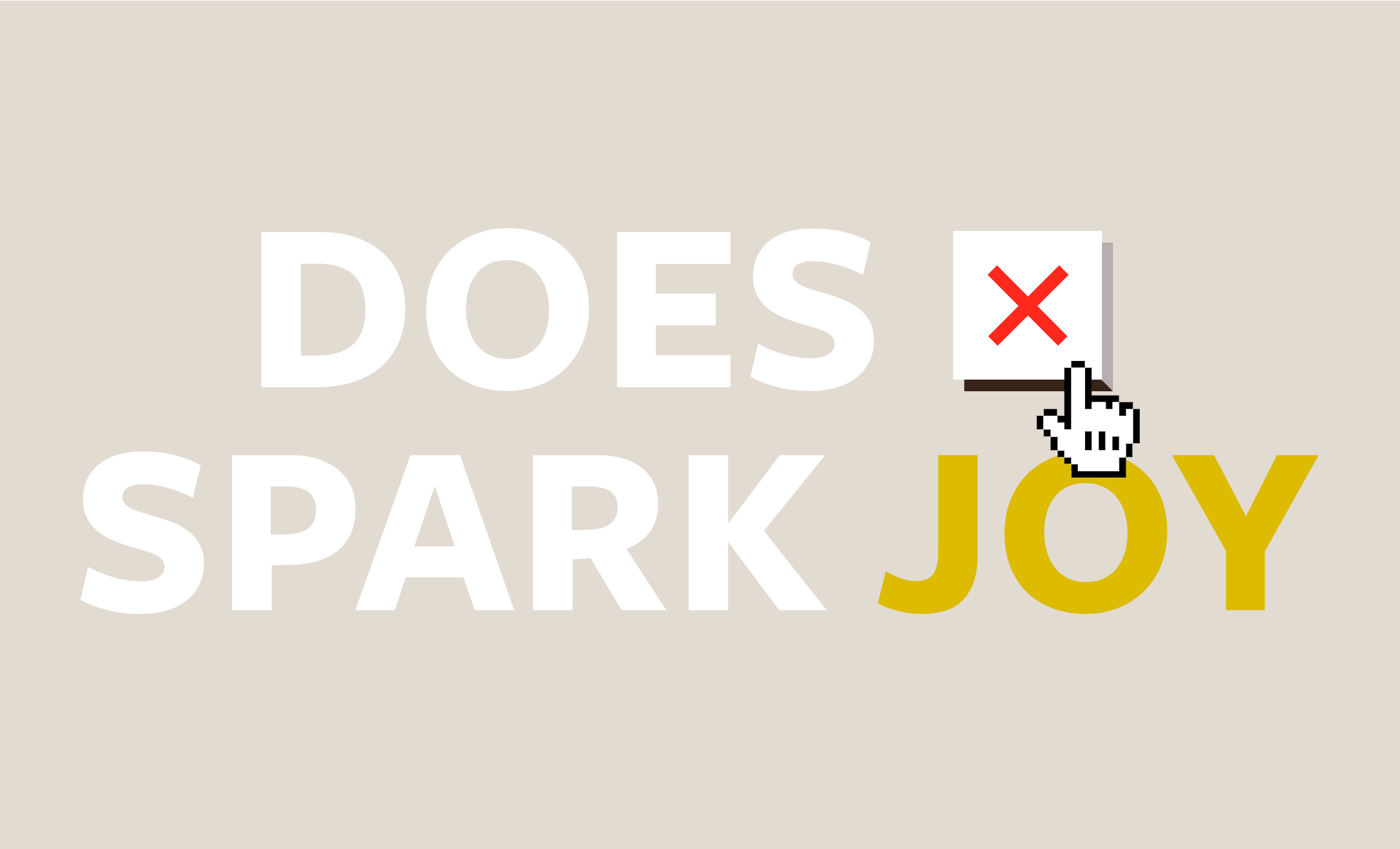Have a (Good) Reason for Everything
6 min read
When you set out to make something, you don’t just throw a bunch of pieces together and hope for the best—you plan, choose parts carefully, and assemble based on your vision. If you do all of this right, everything makes sense and your creation does the thing you want it to do.
Let’s say you’re building a car. It certainly must have the basics, like an engine or a steering wheel. Otherwise it could hardly be called a car. But perhaps you carry golf clubs around a lot. It needs a large trunk. Maybe you park in the sun every day. That would call for fade-resistant paint. What if you’re an environmentalist? Then it’s electric or nothing. Everything has a reason. Every choice works to make a car that serves your purpose.
What if you didn’t stop there? How about fuzzy dice? Wouldn’t that look cool? And how about some spinner rims? Those are neat. And how about two extra wheels, just because you can. Pretty soon, you’ll no longer have a purpose-driven vehicle, but something only a flamboyant narcissist could love. In some cases, your additions may actually make using the car harder. Have you ever tried driving with a furry steering wheel cover?
Now imagine you’re building a website, mobile app, or software suite. When putting pixel to screen, you may be similarly tempted by trendy add-ons or endless expansions. Just like the car, too many useless additions are going to make your product itself, well, useless. If you instead make sure you have a (good) reason for every choice, you’ll create something people enjoy using and soon can’t do without.
Assembling a Digital Product
When you get right down to it, much like a vehicle, interfaces are made up of many little elements, various odds and ends arranged together to form a whole. Some objects we can see, like icons, pictures, or graphics. Some things we read, like articles, promotional areas, text titles, or microcopy. Wayfinding bits such as links, navigation, menus, and buttons, help us find what we’re looking for. Other stuff is more functional, like search boxes, CMS widgets, animations, or forms. They help us do things. You get the idea.
What these elements are, how they are arranged, and how they work mean something. Your digital product is the sum of these disparate parts. That product can be revolutionary if all the pieces fit and act just right.
Ay, there’s the rub.
The Aimless Interface
Unfortunately, just like our tricked-out car, most sites, apps, and software include an avalanche of unwanted rubbish. As a result, they lack coherence. They don’t function the way people want. They give users trouble despite voluminous “help.” Such products have a distinct lack of purpose.
If we are honest, we rarely consider how visuals, words, navigation, and yes, even functionality achieve our goals. Instead, we make interface choices for categorically terrible reasons. Here are some of the worst:
- It looks nice.
- It works.
- It’s out-of-the-box.
- The template calls for it.
- Just reuse existing copy.
- That’s how we’ve always done it.
- That’s how our competitors do it.
- We want to win an award.
- The CEO or big ‘ole committee demanded it.
- The development team likes it.
- The “about us” stuff is vital.
- It’s easier and quicker this way.
Each of these awful rationales are also painfully typical. If your decisions are based on any of them, you have almost certainly made a major mistake. You cannot make business-changing digital products this way. Just because you can or want to do something doesn’t mean you should. Too many screen-based products are the digital equivalent of our overwrought car, a rolling stockpile of bad decisions. You wanted 25 bobbleheads on the dash and you were able to get them on there, but that doesn’t mean it’s worth disrupting the driver’s field of vision.
You can do better.
Out With the Bad
First, get friendly with the notion that everything in your site, app, or software—and I mean every last little thing—must be there for a sound reason. There should be nothing extraneous, unneeded, superfluous, or otherwise nonessential. Nothing.
This means trimming the fat. If we’re looking at our car, we say no to the dashboard Netflix feed. We take off the bad bumper stickers. We remove the wheel spikes (for the love of all things good and decent). We throw away the flag and too-long antenna that hits every parking garage ceiling.
Do the same with your site, app, or software. Your product should do only what is necessary to serve users excellently. All copy should be mercilessly culled. The bulk of your content effort should be spent crafting precise, appropriate microcopy and titles. Since we’re talking carnage, strip design of any decorative, trendy, or flighty distractions. People may choose cars at least partially on the way they look, but no one visits your app or site for the glorious visual shell.
Above all, commit to simplicity. Navigation should be beautifully utilitarian and straightforward. Even your strategy must be simple enough to state in 30 seconds. Utility fosters purpose.
What Happens When You Simplify
Ruthless assessment of your digital product may be uncomfortable, but it works. Removing useless clutter will:
- Help you focus on what people actually need and want.
- Funnel resources to their most profitable and efficient uses.
- Boost usability and user satisfaction.
- Save development and testing time.
- Get your product to market faster.
- Increase engagement.
- Eliminate distracting nonsense and internal navel-gazing.
What to Keep
What elements of your site, app, or software should you always keep? You have a good reason to keep something if:
- It directly helps users do what they have come to do.
- Evidence from user tests, interviews, or prototypes proves its value.
- It is pivotal to your business strategy.
- It reinforces your simple, direct content strategy.
- It fixes a problem trainers or call center personnel have repeatedly identified.
- It follows usability best practices.
- Analytics data back up its extensive use.
- Core functionality would be negatively affected without it.
- Technical constraints offer you no choice. (Even then, plan to address it.)
When you plan and build your digital product based on these user experience best practices, your chances of making something remarkable and embraced by the market increase significantly. After all, some of the greatest, most iconic, best selling cars ever made are wonderfully simple. They rarely come standard with beaded seat covers or a dashboard Jesus.

You Can Start Today
You don’t need to be a UX professional to assess and purge your digital product. You need only to apply basic rules first: Useless things go. Useful things stay.
You can do this at any stage of development. Simply prepare a list of elements that, if removed, would not change your product’s core value or affect your users’ ability to complete tasks. Then, take a deep breath and get rid of these items, each and every one. Delete, rip, tear, destroy. Don’t make excuses to keep them. Let them all go.
If you take something away and your product still accomplishes its mission, still serves your users well (you’ve done your research, right?), and still gets the job done with aplomb, you’ve done right. Keep going. When you’re satisfied you have swept away the chaff, go back and do it again. You’ve surely missed something. If you are on the fence about anything, that’s a sign it should go. Remove things until the taking away negatively affects users or eats into the app’s reason for existing. Only then should you stop.
Do this and you’ll be left with an essential core, your digital nucleus. Invest here. Expend your energy only on what matters. If ever another trendy bell, whistle, or tangential feature tempts you, toss it aside immediately.
Don’t worry if your approach is imperfect. It is more important that you begin. When you intentionally improve your site, app, or software, you are making a better user experience, which means a more useful, profitable digital product.





